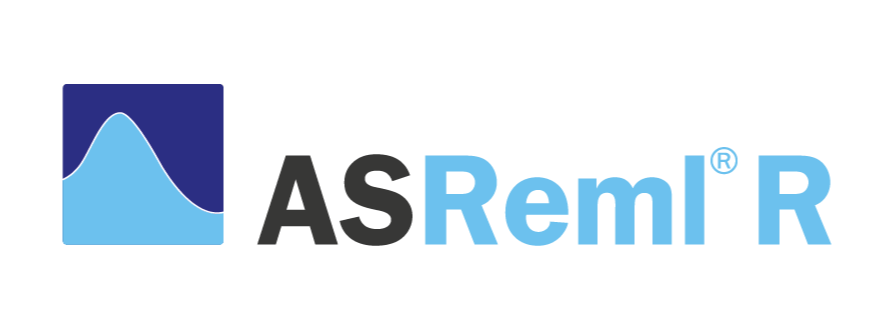GenStat 是個數據分析工具,也是統計軟體。事實上,GenStat 可以被稱為「我工作中不可或缺的幫手」。GenStat 是一款功能強大的統計系統軟體。靈活而完全交互式系統,最先進的圖形化工具,友好的圖形化用戶界面,以及強大的統計學程式編製功能。GenStat幫助你處理工程上的數據統計,科學研究中的數據分析...等。GenStat 具有悠久的成功歷史,並且不斷更新發展,使其活躍在統計學技術的最前沿。被廣泛應用於學術界、科研探索以及工業領域。
GenStat 是透過一個視窗選單介面讓初學用戶便於使用的全面化統計系統, 也可透過一個強有力的命令語言介面讓有經驗的用戶有更多的權力和靈活性。
完全互動式系統,最先進的圖形化工具,友好的圖形化用戶介面,還有強大的統計學程式編制功能。GenStat 具有30年悠久的成功歷史,並且不斷更新發展,使其活躍在統計學技術的最前端。GenStat的主要優點之一是已經透過培養訓練統計員重複被測試的可提供的統計方法的巨大的範圍,穿過很多應用和訓練。
- basic statistics 基本的統計
- design and analysis of designed experiments 實驗設計
- analysis of linear and generalized linear mixed models
- microarray analysis
- regression (linear, nonlinear and generalized linear)
- hierarchical generalized linear models
- spatial analysis 空間分析
- multivariate analysis techniques 多變量的分析技術
- time series 時間序列
- statistical process control methods 統計過程式控制制方法
- survival analysis 生存分析
- sample size calculations and resampling methods
更新介紹
- 23 new procedures
- 4 new functions
- Analysis of variance for censored data (ATOBIT, AUTOBIT)
- Analysis of censored regression analyses with Normal, gamma and negative binomial data (RGTOBIT, RNTOBITRNBTOBIT)
- REML analysis of field trials using a two-dimensional spline model (V2DSPLINE)
- Design and analysis of sets of n-of-1 trials (N1ANOVA, N1DESIGN, N1PLOT, N1SIMULATE, N1TTEST)
- Negative binomial probabilities and random numbers (CLNEGATIVEBINOMIAL, CUNEGATIVEBINOMIAL, EDNEGATIVEBINOMIAL, PRNEGATIVEBINOMIAL, ELNEGBINOMIAL, EUNEGBINOMIAL, GRANDOM)
- Gamma distribution expected values (ELGAMMA, EUGAMMA)
- Improved default settings for the symbols, colours and line-styles used in graphs
- At the start of each job, the server now loads the default graphics environment that is specified in the computer’s Registry, and that Registry setting can be accessed and defined (GET, SET)
- Heatmaps (DBANDCOLOURS, DHEATMAP, FHEATCOLOURS)
- Graphical displays of data in a table, so that you can create PDF reports that include graphs (DPRINT)
- 管理Genstat自己的電子表格上的數據
- 兼容Excel電子表格(導入/導出)
- 使用直方圖,箱線圖,散點圖,折線圖,格子圖,輪廓和三維曲面圖等圖形說明數據
- 將數據與表格報告,擬合分佈和標準測試(如t檢驗和各種非參數檢驗)進行匯總和比較
- 使用具有廣泛數學和統計功能的通用計算工具轉換數據
- 線性或非線性回歸變量之間的模型關係,廣義線性模型,廣義加性模型,廣義線性混合模型或分層廣義線性模型
- 使用平衡ANOVA或REML方法(包括相關結構的建模)分析實驗,從單因素方差分析到具有多個誤差變化源的複雜設計
- 設計調查決定檢測預期治療效果所需的樣本量或重複次數;
- 通過多變量技術識別數據模式,如規範變量分析,主成分分析,主坐標分析,對應分析,偏最小二乘法,分類樹和聚類分析;
- 分析分層或非結構化調查的結果;
- 繪製控製圖,打印Pareto表併計算能力統計;
- 使用Box-Jenkins模型或光譜分析分析時間序列;
- 分析重複測量,分析方差,或使用前瞻性依賴結構,或通過建模隨時間的相關性;
- 使用克里金法或空間點過程分析空間模式。這些技術在農業,生態學,遺傳學,醫學研究和其他生物學領域,以及工業研究和質量控制以及經濟和社會調查中都很有用。事實上,在使用統計數據的任何研究,商業,政府或教育領域。
Minimum requirements for running Genstat
- An Internet connection to activate your software license
- 64 bit processor
- Windows 10 or higher operating system
- Administrative rights
- Sufficient free space on your hard disk (this varies by product but 500 MB will be sufficient)
- For our concurrent licenses, you will need 2 open outgoing ports, which on most networks are open by default. You will be emailed these designated port numbers at the time of purchase. If your organization has a network security policy / firewall you may see error messages during installation and will need to contact your IT department / network administrator. (Also contact our support team if you require more help).
CycDesigN
CycAnalysis is a separate module in CycDesigN that allows output from a CycDesigN session to be tailored in a form ready for analysis. For example, a spreadsheet of the design blocking and treatment structures is automatically generated. CycDesigN also lets you generate Genstat and SAS code for the analysis of most designs.
CycDesigN provides the most comprehensive design generation package yet available for experimenters. In particular, resolvable and partially replicated designs are used by experimenters involved in field variety trials. For smaller experiments, say in the glasshouse or laboratory, non-resolvable row-column designs are often employed and can typically include spatial enhancement. Crossover designs are frequently used in areas such as clinical trials, taste and psychological testing and psycho-physical experiments. The authors are leading researchers and, as a result, the algorithms incorporate the most recent developments in the construction of experimental designs.
ASReml
Fit linear mixed models using advanced restricted maximum likelihood (reml) techniques.
Using the Average Information (AI) algorithm and sparse matrix methods ASReml handles large or extremely large and complex data analysis (of 500,000 or more observations / effects). It provides flexible methods to model a wide range of variance models for random effects or error structures.
Change the text below to read – The typical applications of ASReml include the analysis of:
- (un)balanced longitudinal data
- (un)balanced designed experiments
- multi-environment trials
- both univariate and multivariate animal breeding
- genetics data
- regular or irregular spatial data
- repeated measures analysis
ASReml R
ASReml-R, the powerful statistical package that fits linear mixed models (LMMs) using Residual Maximum Likelihood (REML) in the R environment is now at version 4.
This version offers a more unified framework and extended functionality for LMM analysis, particularly for large and complex data sets. New features with Version 4 include:
- new and improved licensing
- a simplified and more meaningful syntax for model specification:
- rcov becomes residual and direct sum structures for residual models with data partitioned into sections to which separate variance structures are applied are now logically specified using a dsum() function
- rarely used options are now listed externally to the model call in a newasreml.options() function
- a more unified framework for related arguments in the call to asreml()and the output object , e.g.
- na.action() for dealing with missing values in both the response and explanatory variables
- a formulae component of the ASReml-R object which lists the fixed, random, sparse and residual model formulae
- improved updates in factor analytic models and a reduced rank rr() variant of the fa() variance model function
- a simpler, more consistent specification of known variance models (including relationship matrices) through the vm() function, which also caters for known singular matrices
- computationally efficient fitting of random regression models when there are more variables than observations – motivated by the use of SNP marker data to explain genotypes
- more informative warning and error messages
- improved graphics powered by ggplot2.
More advanced functionality new with Version 4 includes:
- introduction of the own() variance model to allow the specification of a user-defined variance structure
- extensions to generalized linear models including threshold models and bivariate models with one variate having a normal distribution and the other variate distributed from an exponential family distribution
- generating design matrices to allow use of derived model terms and functions; design argument to asreml.options()
- functions to generate factors that either combine levels of a factor or use a subset of levels to allow easier prediction of models; combine, prune, gpf(), sbs().
Also included:
- computing functions of variance components and their approximate standard errors; vpredict()
- ulating information criteria including AIC and BIC.calc
This is just a selection from the full set of new features available with ASReml-R Version 4. A detailed account of the new functionality is presented in a navigation guide which guides existing users in transitioning from Version 3 to Version 4.


